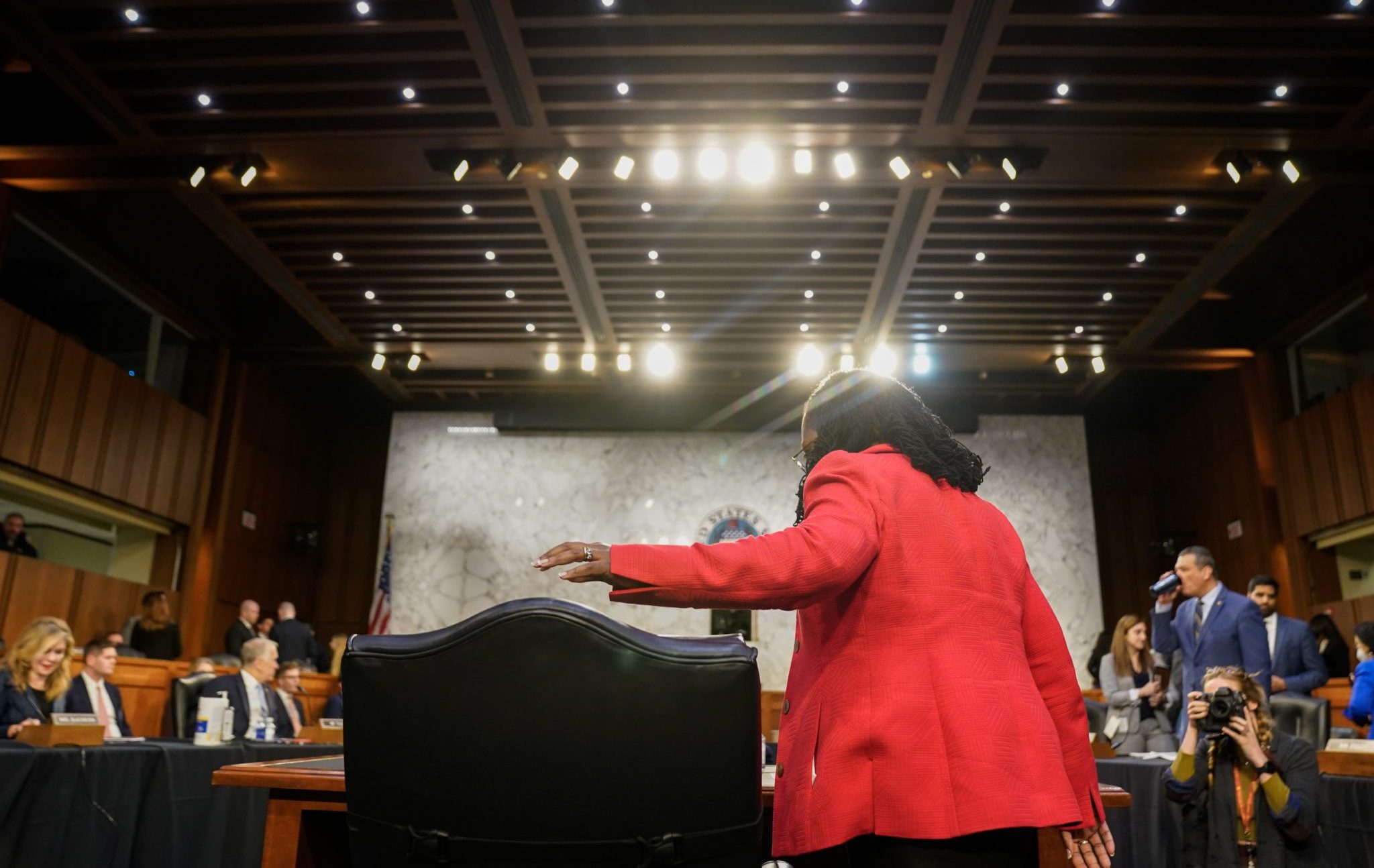What Ketanji Brown Jackson Offers John Roberts

Ketanji Brown Jackson will almost certainly be confirmed to the Supreme Court of the United States. Senator Joe Manchin’s announced intention to vote for her confirmation all but settles it. There’s a good chance Jackson will be on the Court for the next 30 years or more. What will change as a result of her confirmation?
In the short term, not much. The conservatives on the Court still retain a favorable 6 to 3 split. Elena Kagan—who speaks originalism better than Sonia Sotomayor or the prospective Justice Jackson—remains the liberal wing’s Roberts whisperer. Given the fissures within the Court’s conservative ranks, Kagan has effectively narrowed the scope of the Court’s holdings in cases where the conservative vote has split. She brokered a compromise in Little Sisters of the Poor v. Pennsylvania that relied on the discretion given to administrative agencies rather than the nuns’ conscience rights under the Religious Freedom Restoration Act—a narrow holding that allows future administrations to revoke the Little Sisters’ exemption. This sort of dealmaking appeals to self-conceived pragmatist Chief Justice Roberts, who voted with Kagan in 64.5 percent of all merits cases in the 2020 term—the same rate at which he sided with Clarence Thomas.
Whether Kagan becomes more or less pivotal for the liberal wing of the Court depends entirely on Jackson’s judicial philosophy. We don’t know what Jackson’s philosophy is, or whether she has one. She said in her confirmation hearings that she would defer to the original public meaning of the Constitution when the text was dispositive, but she declined to embrace the “originalist” label. The closest she got to outlining a jurisprudential philosophy was describing her “methodology”—that is, clearing her mind of “preconceived notions,” assessing all “appropriate inputs,” and “observing the constraints” imposed by the text and precedent in an attempt “to figure out what the words mean as they were intended by the people who wrote them.”
The fact that Jackson felt the need to dress up her arguments up in originalist language suggests that she is closer to Kagan than Sonia Sotomayor, an ideologue who reasons backwards from substantive commitments with little regard for the text. If Jackson is closer to Kagan than Sotomayor, Roberts could have a second compromise vote to offset divisions among the Court’s conservatives.
The conservatives on the Court often find themselves in agreement—each of the Court’s conservatives justices were in the majority in over 80 percent of the cases heard in the 2020 term. But they also disagree among themselves on important issues that have strategic implications for the compromise-minded John Roberts.
Clarence Thomas has been the lone dissenter in otherwise-unanimous decisions 30 times in his decades on the bench. Unlike Antonin Scalia, Thomas has no scruples about overturning shoddy precedents. “When faced with a demonstrably erroneous precedent,” Thomas wrote, “my rule is simple: We should not follow it.” Thomas has even called for the disincorporation the establishment clause of the First Amendment. (If you are a textualist, it is hard to argue with his reasoning. )
Samuel Alito, like Thomas, is willing to dissent from his colleagues from the right. He wrote a fiery dissent in Bostock v. Clayton County, which extended Title VII protections under the 1964 Civil Rights Act to gay and transgender employees; Neil Gorsuch authored the majority opinion.
Gorsuch and Brett Kavanaugh are more “gettable” for the Court’s liberal minority and liberal plaintiffs than are Thomas and Alito. Gorsuch has libertarian sensibilities, and often joins the Court’s liberals in criminal-justice cases. Kavanaugh is a Roberts fanboy. He reportedly had a blown-up picture of himself and John Roberts on the wall of his D.C. Circuit chambers. Kavanaugh rarely stakes out unpopular positions; he was in the majority in 97 percent of cases heard in the Court’s 2020 term, far and away the highest proportion of any of the nine justices. He was more likely to rule with Kagan (67.7 percent) and Stephen Breyer (69.4 percent) in 2020 merits cases than Clarence Thomas (66.1 percent).
“I don’t think Thomas or Alito gives a s[—] what The New York Times says about them,” one of Kavanaugh’s friends told the Atlantic. “But I think Brett does.”
Perhaps this is true not only of Kavanaugh, but the chief justice himself. Noah Feldman of Harvard Law School argued that “Roberts’s approach…is to try to craft a middle ground that will make the Supreme Court seem less purely political than it would if he opted to join the conservatives.” Roberts’s desire to make the Court seem less “political” leads him to pursue compromise where justice demands clarity.
With a string of controversial cases on the Court’s docket this year on issues ranging from abortion to affirmative-action, Roberts could enlist Kagan and a future Justice Jackson to craft compromise verdicts with either Kavanaugh, Gorsuch, or Amy Coney Barrett. The latter three justices were in the majority in more than 90 percent of the Court’s 2020 cases, while Alito (83 percent) and Thomas (81 percent) were not. Elena Kagan (75 percent) was not far behind either Alito or Thomas. If Jackson aligns herself with Kagan, it’s possible the compromise-minded Roberts turns to the pair of pragmatic liberal justices instead of the mavericks to his right.
Comments